6 AI Tools That Read Customer Reviews (& How to Use Them)
Explore AI tools that streamline customer review analysis, turning vast feedback into actionable insights for better decision-making.

Customer reviews are full of useful insights, but sorting through thousands of them manually is overwhelming. AI tools make this process faster and more efficient. Here’s a quick summary of the top tools and how they help:
- AppFollow: Tracks and analyzes app store reviews. Plans start at $179/month.
- MonkeyLearn: Organizes feedback by topics with visual dashboards. Starts at $299/month.
- Revuze: Scans reviews across platforms and offers customizable dashboards.
- ReviewTrackers: Collects and analyzes reviews with plans from $59/month.
- Thematic: Groups feedback into themes with clear visual reports.
- BuildBetter: Combines external reviews with internal data for deeper insights.
Key Benefits of AI for Review Analysis:
- Saves Time: Processes thousands of reviews in hours.
- Spot Trends: Identifies patterns and customer sentiment.
- Improves Accuracy: Reduces human error in analysis.
- Proactive Insights: Anticipates customer issues before they escalate.
Quick Comparison Table:
| Tool | Key Feature | Starting Price |
|---|---|---|
| AppFollow | App store review analysis | $179/month |
| MonkeyLearn | Topic-based feedback organization | $299/month |
| Revuze | Cross-platform review insights | Custom Pricing |
| ReviewTrackers | Sentiment analysis across platforms | $59/month |
| Thematic | Theme-based feedback grouping | Custom Pricing |
| BuildBetter | External + internal data integration | Custom Pricing |
These tools help businesses turn feedback into actionable insights, saving time and improving decisions. AI doesn’t replace human understanding but enhances how companies analyze and act on customer reviews.
Master Customer Feedback Analysis with MonkeyLearn.com's ...
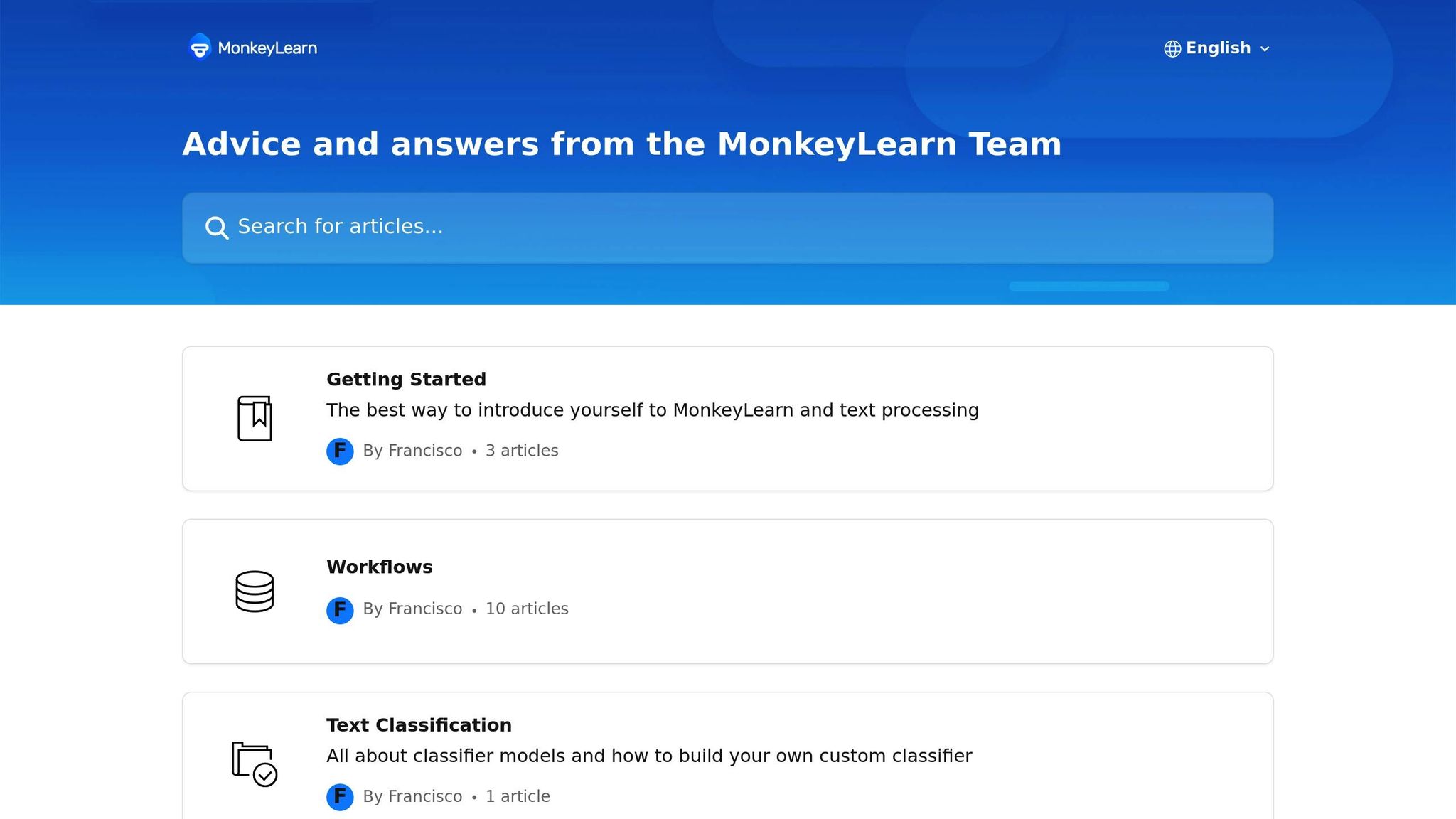
How AI Analyzes Customer Reviews
AI has revolutionized how companies process customer feedback, turning what used to take weeks into a task completed in mere hours. This shift is helping businesses better understand and respond to customer needs.
Key AI Analysis Functions
AI tools transform raw feedback into meaningful insights through several core functions:
- Sentiment Detection: AI picks up on subtle emotions in feedback. For example, a tea company discovered feelings of frustration and confusion about its packaging, leading to specific changes that addressed customer concerns.
- Automated Categorization: Tools like Sheer Velocity's NLP can tag and prioritize feedback, ensuring that pressing issues are addressed quickly.
- Pattern Recognition: Mention uses AI to review platforms like G2 and Capterra, generating trend reports in just 10 minutes. These insights directly inform product updates.
-
Predictive Analytics: Toggl's CEO, Alari Aho, highlights how AI anticipates problems before they escalate:
"We employed AI-driven predictive analytics to anticipate customer issues before they escalate. By analyzing historical feedback data, AI models can predict which features or aspects of our tools are likely to cause user frustration or delight."
Benefits for Product Teams
AI's capabilities translate into real-world advantages for product teams, streamlining processes and improving decision-making.
-
Time Savings: AI processes thousands of reviews in hours. Matthew Franzyshen from Ascendant shares:
"One major benefit I've experienced is the ability to process vast amounts of feedback data in record time. We once analyzed over 10,000 customer reviews in just a few hours, a task that would have taken our team weeks to complete manually."
-
Improved Accuracy: AI ensures consistent criteria in its analysis, reducing errors and bias. However, as Sally Bannerman from ICUC.Social explains, human review is still crucial:
"AI's limitations include potential misinterpretation of nuanced feedback and a lack of creativity and emotional understanding. Once our human analysts review these AI reports, they interpret the insights to double-check accuracy and identify more nuanced responses. This is key to connecting the dots between raw data and actionable advice because a robot simply won't have the contextual knowledge needed to interpret certain trends properly."
- Strategic Insights: By identifying trends and flagging issues early, AI helps teams address problems proactively and make informed strategic decisions. This capability allows companies to process daily feedback and adapt their products efficiently.
6 AI Review Analysis Tools
These six AI tools help businesses turn customer reviews into useful insights. Each tool has its own strengths, catering to various review analysis needs.
AppFollow
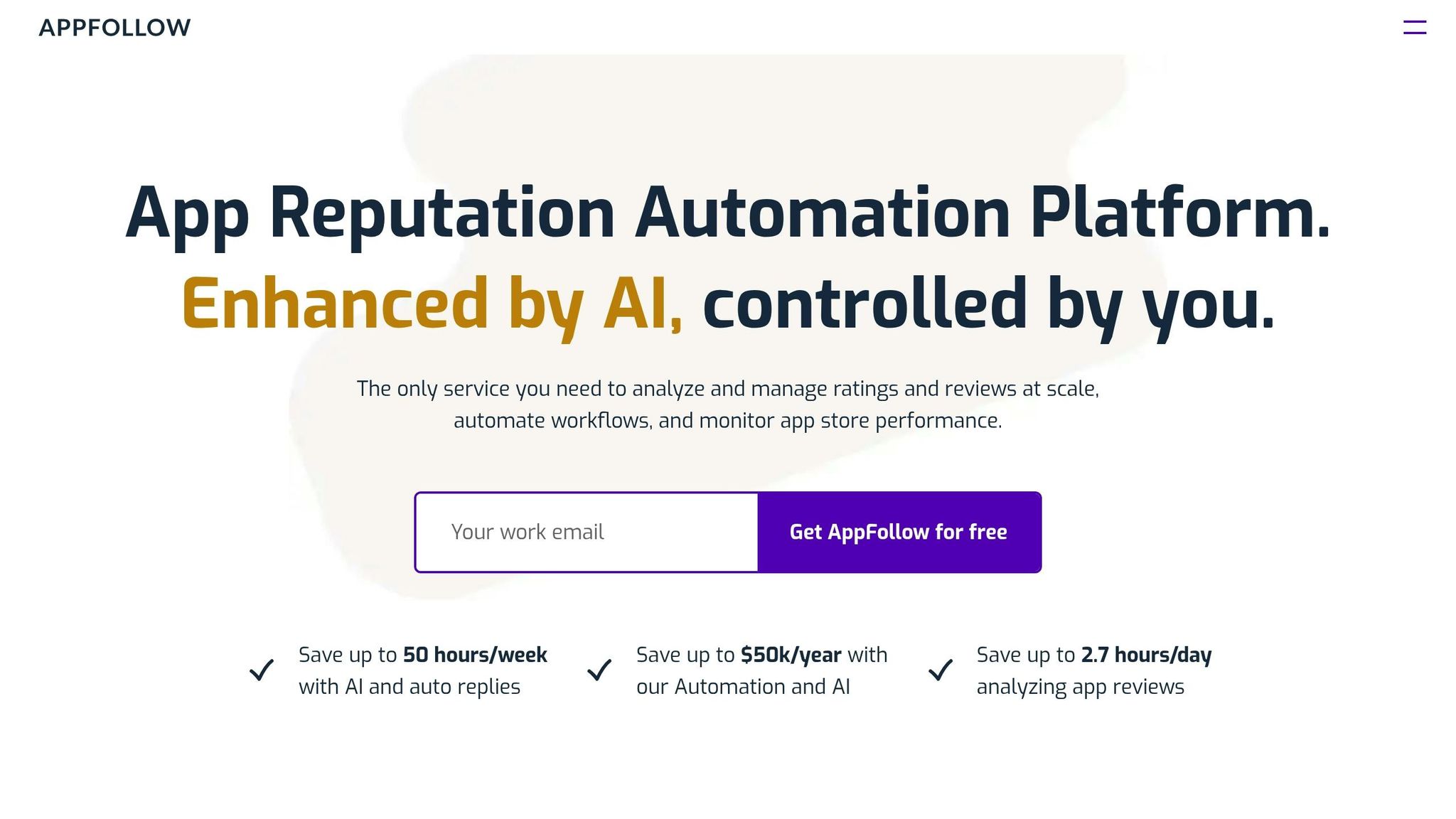
AppFollow specializes in analyzing app store reviews. It offers automated categorization and real-time monitoring across multiple app stores. Starting at $179 per month, it simplifies the process of tracking and understanding app feedback.
MonkeyLearn
MonkeyLearn processes raw customer feedback and organizes it by topics. Its visual dashboards let teams easily track trends. Plans begin at $299 per month, making it a solid option for handling large amounts of reviews.
Revuze
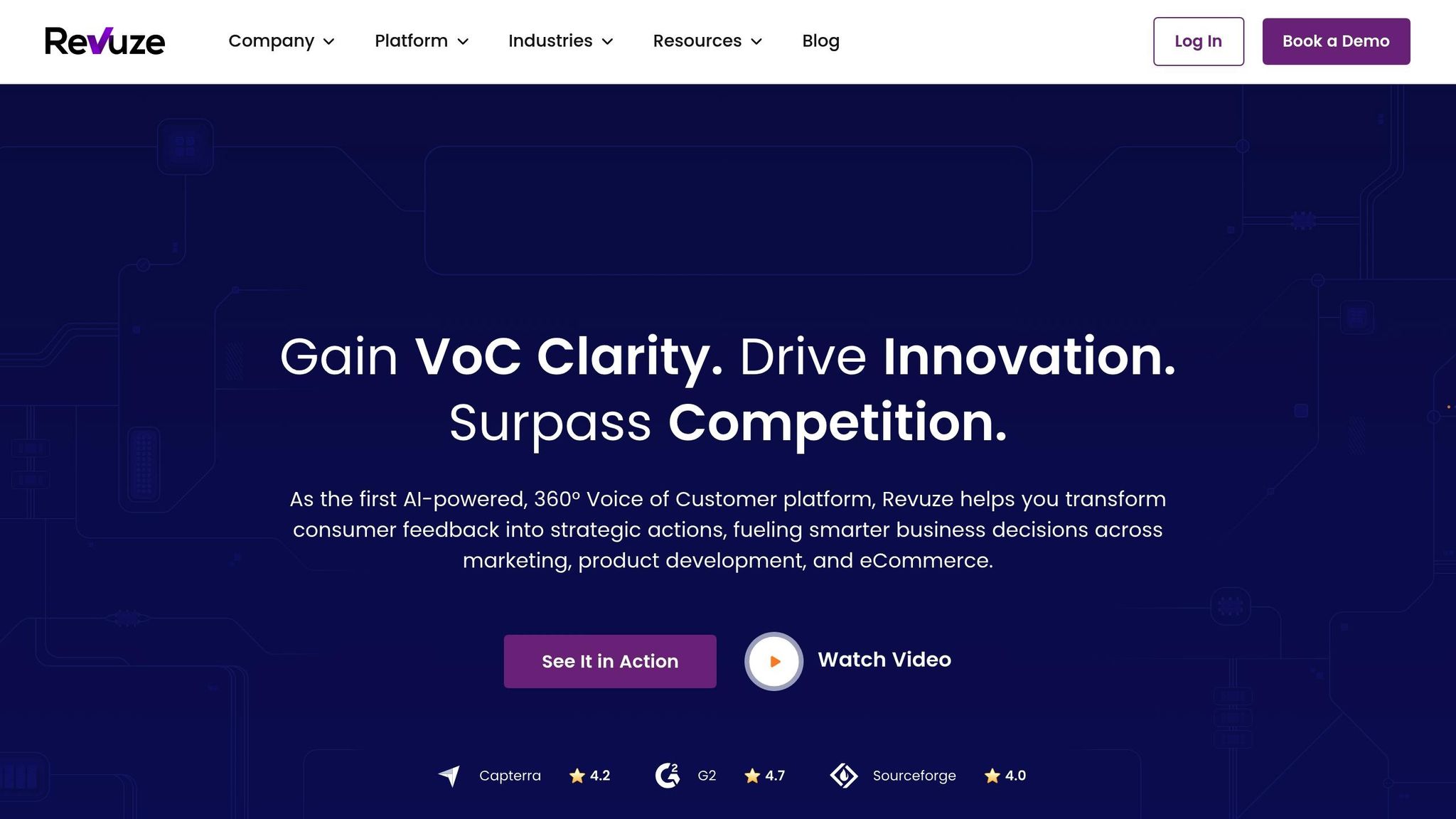
Revuze scans reviews from different platforms to provide a full view of trends and customer sentiment. Customizable dashboards allow businesses to visualize and interpret feedback in a way that suits their needs.
ReviewTrackers
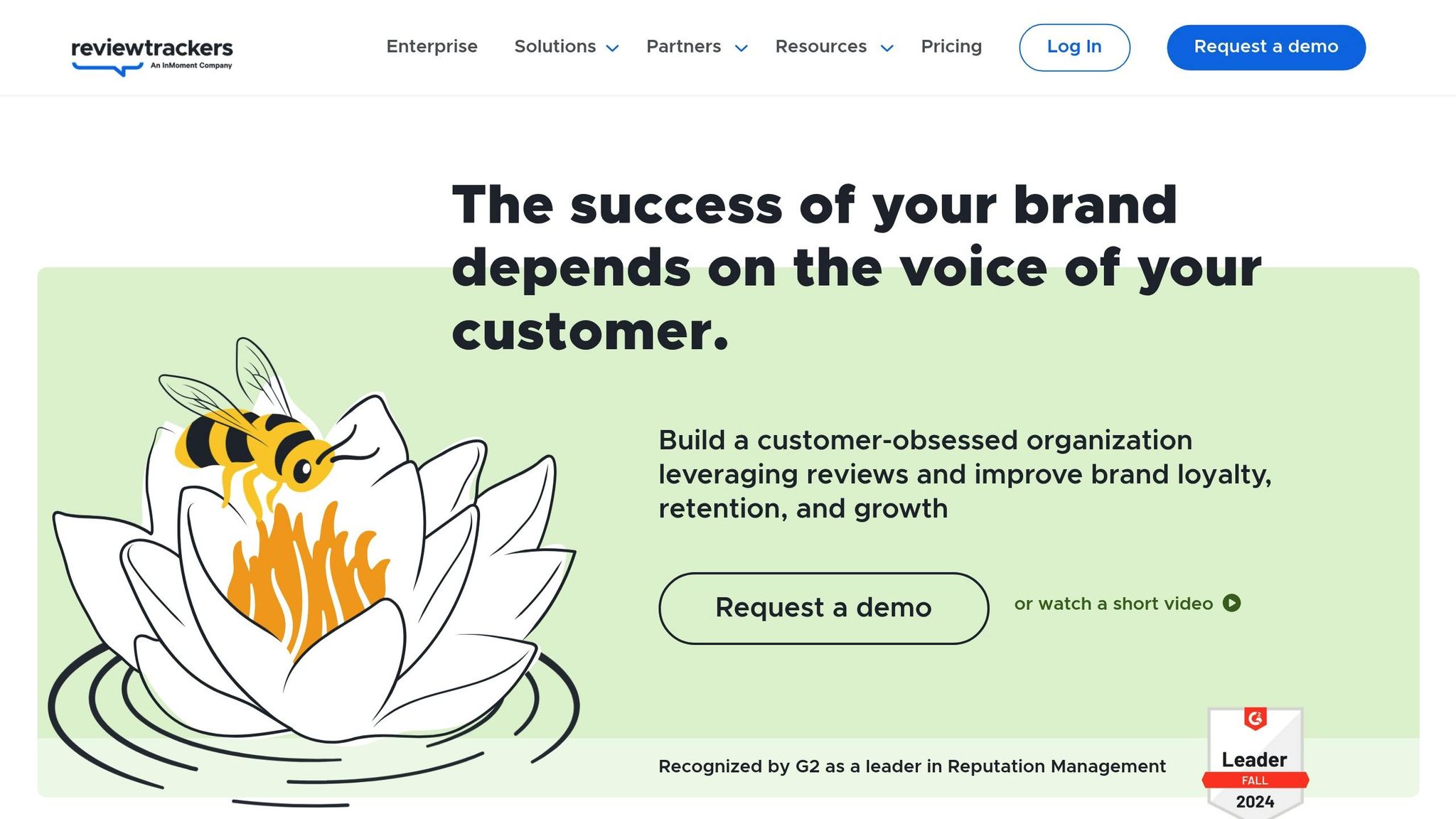
ReviewTrackers collects and analyzes reviews from various platforms, focusing on overall customer sentiment. With plans starting at $59 per month and customizable reports, it’s an affordable choice for managing reviews in one place.
Thematic
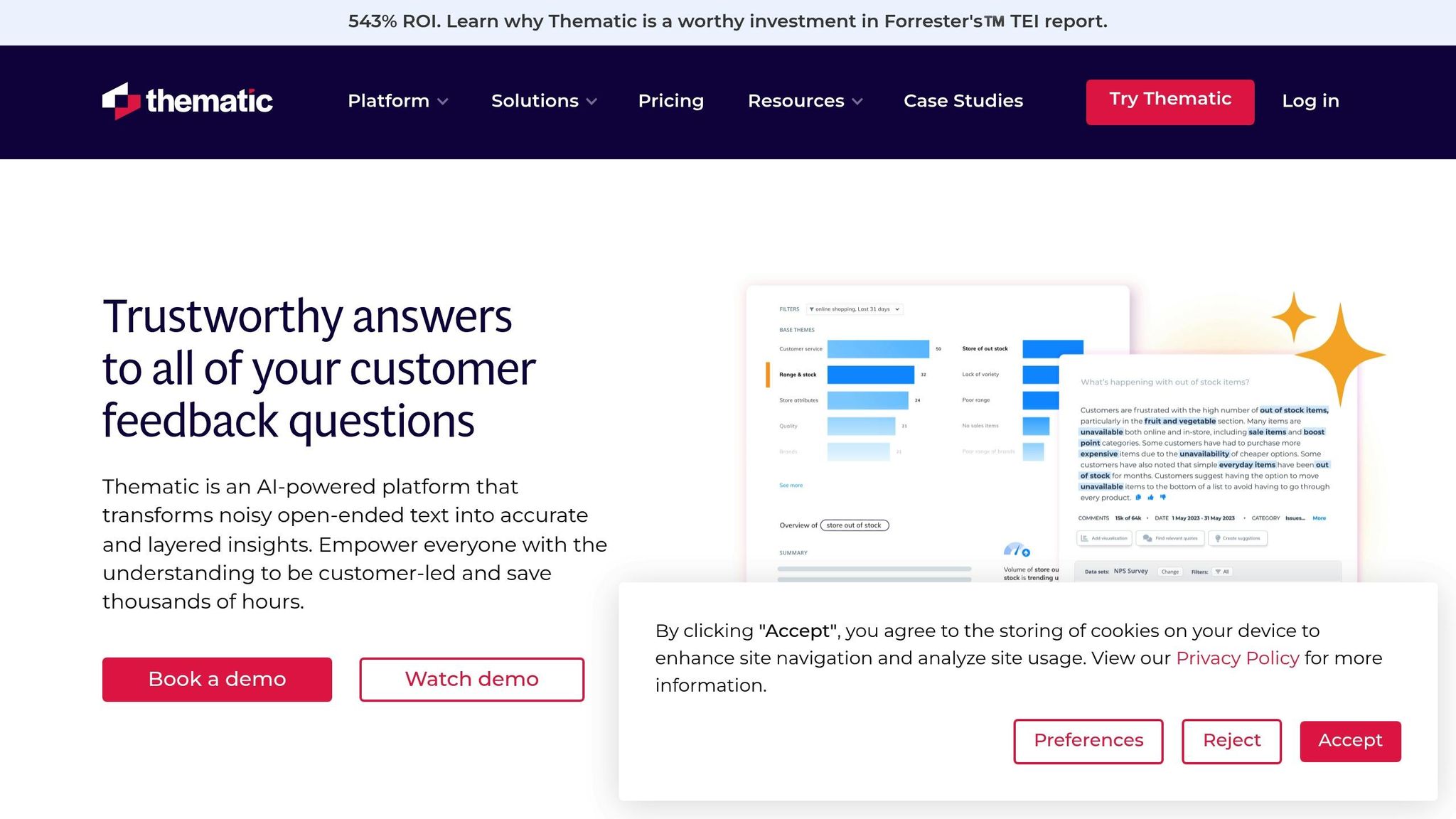
Thematic groups similar feedback together, highlighting recurring issues through clear visual dashboards. This helps product teams quickly spot areas that need improvement.
BuildBetter
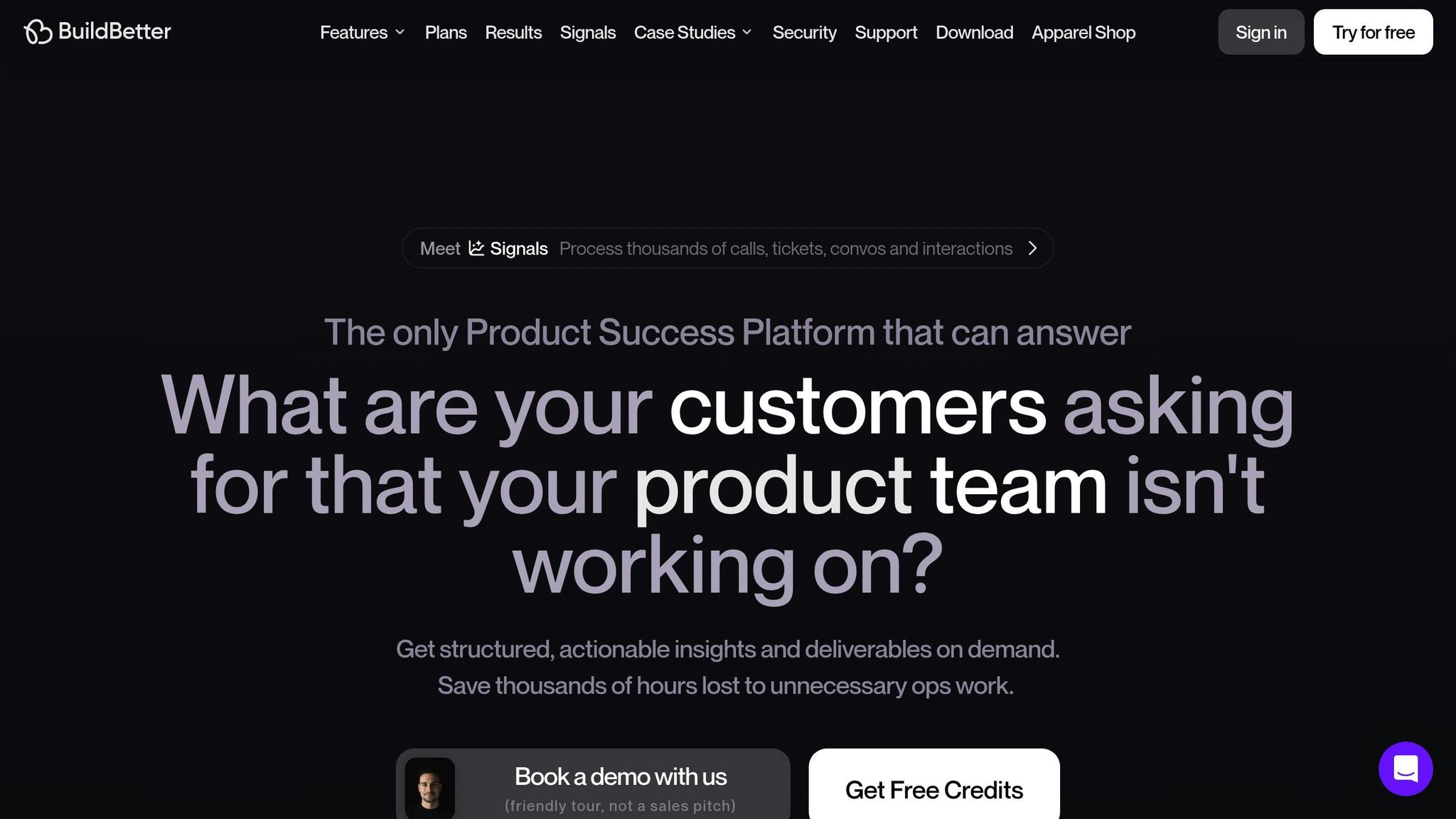
BuildBetter combines external review analysis with insights from internal communication. It integrates data from over 100 sources and offers features like AI-powered call transcription, smart meeting summaries, and automated project briefs. With tools like real-time AI chat and advanced permission settings, it brings customer feedback and internal data into one unified platform.
How to Get the Most from AI Review Tools
Setting Up Review Data
Getting accurate insights starts with properly organizing your review data. Chad Gouws, Founder at FDB Analytics, highlights the importance of consistency:
"If customers are not communicating through consistent channels or the data is not available in an accessible manner, this method struggles to produce results".
Here’s how to prepare your data effectively:
- Centralize Your Data Sources: Collect reviews from all platforms - app stores, support tickets, social media, and surveys - into one place.
- Clean and Standardize: Eliminate duplicates, fix formatting issues, and ensure text fields are uniform for smooth AI processing.
- Implement Consistent Tagging: Use standardized categories for feedback types, product features, and customer demographics.
Making Sense of AI Results
AI tools can process large amounts of feedback quickly, but they might misinterpret subtle language. Combining automation with human review ensures more reliable insights.
| Analysis Type | AI Role | Human Role |
|---|---|---|
| Sentiment Analysis | Quickly assess emotional tone | Review for context and subtle nuances |
| Topic Clustering | Group similar feedback themes | Confirm relevance and prioritize |
| Trend Detection | Spot patterns over time | Analyze the business implications |
Turning Insights into Actions
Once you’ve validated the AI findings, use them to guide your strategy. Data shows that 28% of customer service professionals already use AI for gathering and analyzing customer feedback.
To act on these insights:
- Prioritize Findings: Focus on issues that impact many customers or key product features.
-
Create Action Plans: Outline clear, measurable steps to address problems. Alari Aho, CEO and Founder of Toggl, shares how they’ve benefited from AI:
"We employed AI-driven predictive analytics to anticipate customer issues before they escalate... This proactive approach helps refine Toggl's product development strategy and customize its customer service responses... the long-term gains in customer engagement and operational efficiency are well worth the investment".
- Track Progress: Use metrics and ongoing feedback to measure improvements and refine your approach.
Key Takeaways
The Impact of AI Review Analysis
AI-driven review analysis turns customer feedback into actionable insights, saving time and offering a clearer picture of customer needs.
Here’s how it makes a difference:
| Benefit | Description |
|---|---|
| Time Savings | Processes thousands of reviews in minutes, eliminating the need for days of manual work. |
| Better Insights | Identifies subtle patterns and trends in massive datasets. |
| Consistency | Provides a uniform approach to categorizing feedback and analyzing sentiment. |
| Problem Prevention | Spots potential issues early, allowing teams to address them before they escalate. |
The Future of AI in Product Management
AI is set to play an even bigger role in product teams. According to Zeda.io:
"AI feedback analysis is a powerful way for companies to deeply understand the voice of the customer. When used to its full potential, it can drive meaningful changes that create the best possible customer experiences".
Here’s what to expect:
- Smarter Integration: AI tools will work more seamlessly with current workflows, automatically sharing insights with the right team members.
- Greater Precision: Machine learning models will continue to improve, capturing context and subtlety in customer feedback.
- Predictive Insights: Future AI tools won’t just analyze past data - they’ll help anticipate customer needs and flag potential problems.
While AI can manage large-scale data analysis, human oversight remains essential to ensure these insights lead to impactful decisions.